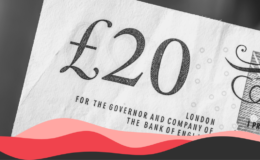
While economic models are a recognised way of using simple frameworks to illustrate complex processes, they are often based on assumptions and are ultimately tested over time by actual economic outcomes.
- The modelling behind the £900 million figure extrapolates the costs to Northern Ireland businesses as a whole based on a selection of cases.
- The modelling assigns the overall administrative burden as a cost to Northern Ireland; however, it is currently being paid by the UK Government.
- Other modelling suggests that Northern Ireland output would be negatively affected regardless of various post-Brexit UK-EU trading agreements.
The Democratic Unionist Party (DUP) has claimed that the Northern Ireland Protocol “costs Northern Ireland £900 million” annually, using figures cited in an article published in the News Letter by economist Dr Esmond Birnie on 23 December 2021.
But how reliable is this claim? Well, it’s quite complicated!
What makes up the £900 million?
The £900 million figure has two parts: a £650 million increase in costs, and a £250 million administrative burden. (An earlier £850 million estimate used a smaller £600 million increase in costs.)
How is the increase in costs calculated?
Back in August 2021, Birnie justified his estimation of a 6% increase in costs of bringing in goods from Great Britain to Northern Ireland, on the basis of his analysis of some business cases and other sectoral data (subsequently described as “from five firms and one trade association”). Birnie applied this figure to a £10bn value of goods trade from Great Britain to Northern Ireland, to suggest a total £600m annual increase in costs (rising to £650m in a subsequent article).
There are other estimations (see below) of how much the Protocol — as a “non-tariff barrier” trading arrangement — may increase costs of the flow of trade from Great Britain to Northern Ireland. For example, an analysis by HM Treasury in 2018 contains a cost estimation of between 5% and 11% for such goods.
In any case, Birnie notes “it is not inevitable that an increase in costs will lead to an inevitable decline in NI’s total output and income (GDP)”. Also, as with all estimations, Birnie adds, “If we had better and more comprehensive data the estimate [costs] might be lower but it might also be higher.”
An important dimension about estimating the economic effects of implementing the Protocol depends on how much it affects Northern Ireland businesses’ supply chains. So, a business such as Marks & Spencer has major supply links with the rest of the UK and will be more affected than those who rely on more local supply chains, such as Henderson’s Group. Businesses less dependent on Great Britain supply chains may gain a competitive advantage in terms of such costs.
Who bears the administrative burden?
Birnie adds £250m per year of administrative costs, including “the Trader Support Service, the Digital Assistance Scheme and checks at Northern Ireland ports”. Currently, such costs are being covered by the British Government, for which Northern Ireland’s proportionate share would be an estimated £7.5m per year.
Alternatively, Birnie has claimed that these costs would in the future have to be borne either by the Northern Ireland administration or by Northern Ireland businesses once UK Government support for them is withdrawn. As fact checkers, we cannot predict the future to verify or challenge that claim. However, at the time of writing, the UK Government has not given a long-term commitment to continuing these supports.
Trade flows two ways
The Protocol undoubtedly affects different businesses in different sectors in different ways.
Is there any evidence of the value of the opportunity to some businesses of Northern Ireland remaining partially within the Single Market and having direct, unfettered access both to the EU and Great Britain market for goods? There are two helpful sources of information from statutory statistics agencies in Ireland and Northern Ireland:
- Ireland’s Central Statistics Office reported that imports to Ireland from Northern Ireland had risen by €1.440bn between the first 11 months of 2020 and the same period in 2021. Exports rose by €1.078bn, creating a trade surplus of €374m on the island of Ireland in favour of Northern Ireland and increasing cross-border trade by over 50%.
- The Northern Ireland Statistics and Research Agency’s Broad Economy Sales and Export Statistics guide is an experimental measure first published in 2015. It uses an annual survey of local businesses’ sales and purchases of goods and services within Northern Ireland and to and from markets outside Northern Ireland (i.e. Great Britain and the rest of the world). Figures for 2021 have not yet been published. When they are, they might help validate or challenge modelling by economists seeking to estimate the practical impact of the Protocol (if any, or in either direction) on Northern Ireland-Great Britain trade.
Of course, statistics can be revised, and updates from statistics agencies can help inform analysis.
Are there other economic models?
Economic models are a recognised way of using simple frameworks to illustrate complex processes. They are based on assumptions and ultimately are tested against actual economic outcomes.
The Fraser of Allander Institute has published modelling (see below). It finds that the “introduction of trade frictions between Northern Ireland and Great Britain has a significantly negative impact on the NI economy, relatively to a no-Brexit counterfactual” (A counterfactual scenario is one that has not happened but might have under differing conditions.)
Several other models have also forecast potential decreases in Northern Ireland’s total output in the case of the UK leaving the EU. These include Oxford Economics (2016), HM Treasury (2018), Fraser of Allander Institute (2019 and 2021), and the Department for the Economy (Northern Ireland) (2020).
For example, modelling by Oxford Economics (2016) suggested potential decreases in Northern Ireland output ranging from -0.1% (liberal customs union) to -3.9% (populist free trade agreement).
Similarly, Fraser’s 2019 modelling suggested potential decreases ranging from -1.1% (UK becomes member of EEA) to -3.3% (UK operates under World Trade Organisation “most-favoured nation” (MFN) tariff regime). The more recent Fraser modelling (2021) — which is often cited alongside Birnie’s modelling — suggests potential decreases ranging from -1.5% (“mitigated Protocol”) to -2.6% ([unmitigated] Protocol).
None of the models above suggest an increase in Northern Ireland’s total output after the UK’s departure from the EU, regardless of the type of UK-EU trading agreement option.




